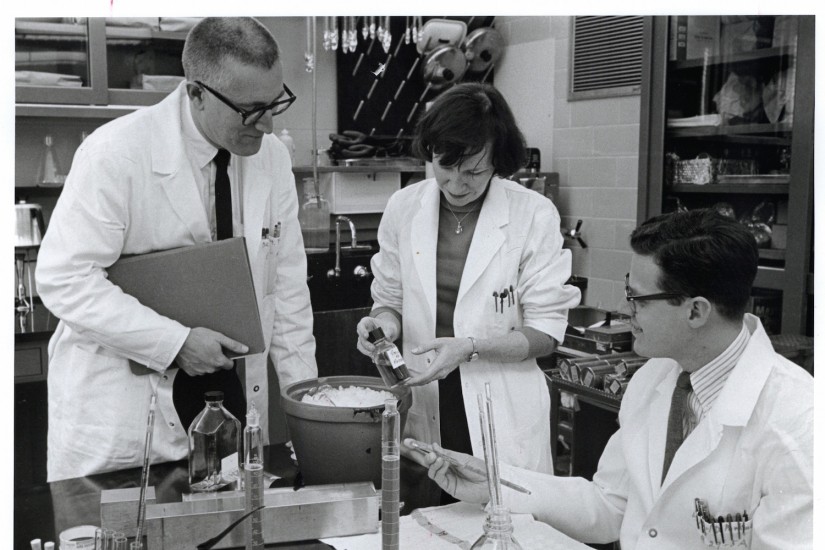Just before I came across this photograph, I had been reading about the efforts of other historians and researchers to identify the women present but unidentified in the history of science and medicine. When I looked at this image and read the existing documentation, I wondered if there was more to her role in the rubella research team than is implied by the phrase “lab technician.” After all, she is holding a bottle of antigen and centered in two photographs with the men who developed the rubella vaccine. Quite frankly, I couldn’t let it go that two male researchers were identified by name while this woman was not.
I wanted (needed) to know who this woman was.
It took over a month but, thanks to some archival sleuthing here at the National Library of Medicine, help from private citizens (including the adult children of former DBS’ laboratory staff), the generous assistance of professional organizations like Graduate Women in Science, conversations with librarians and historians at various museums, universities, and federal agencies—not to mention a fair bit of luck—we have been able to identify this female lab technician as Hope Hopps (1926–1988).
Hopps was much more than a lab technician. She earned a master’s degree in microbiology from the University of Maryland in 1950, an era when few women pursued advanced degrees in the sciences. After working as a bacteriologist for a few years, Hopps joined the staff at the NIH first in the National Institute of Allergy and Infectious Diseases and then in the Division of Biologics Standards’ Laboratory of Viral Immunology.
